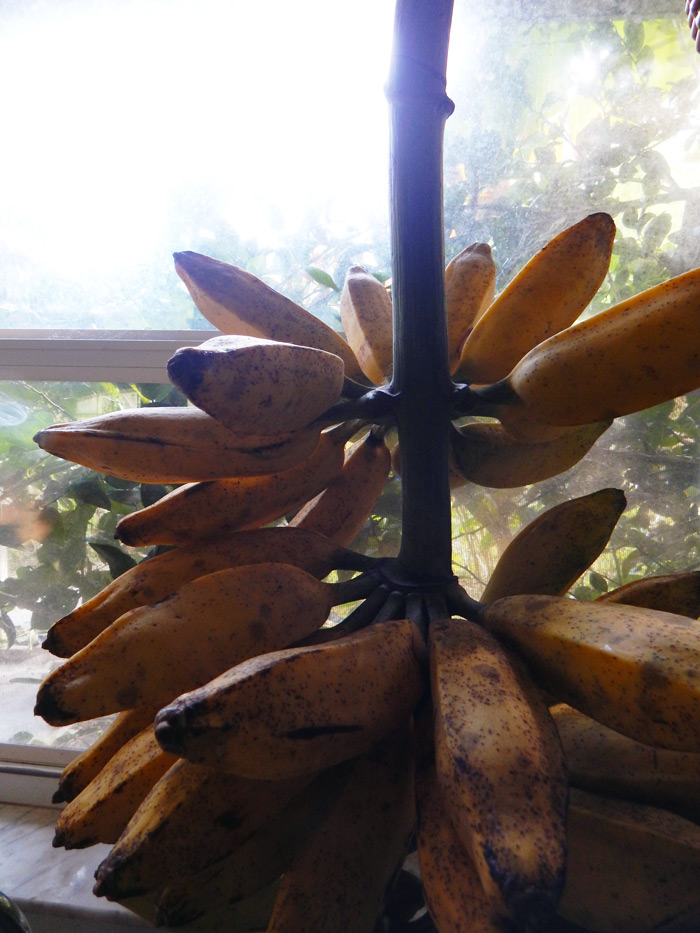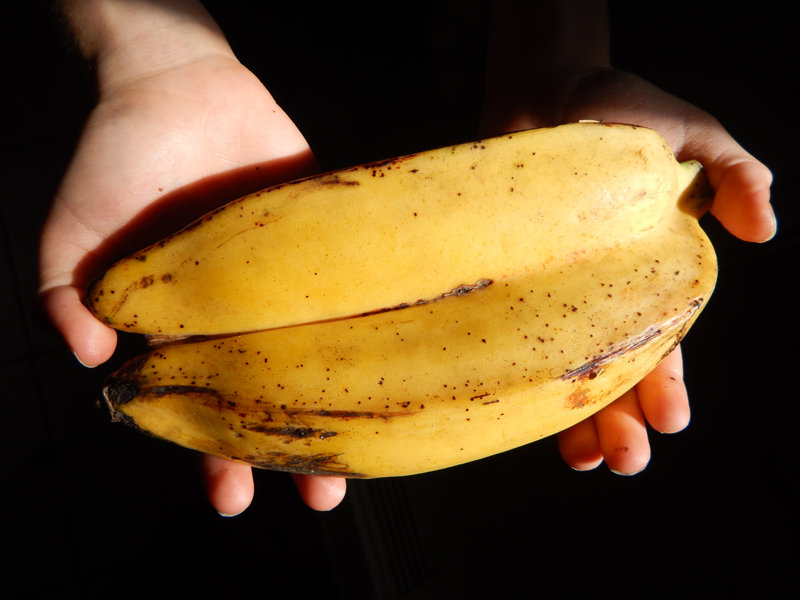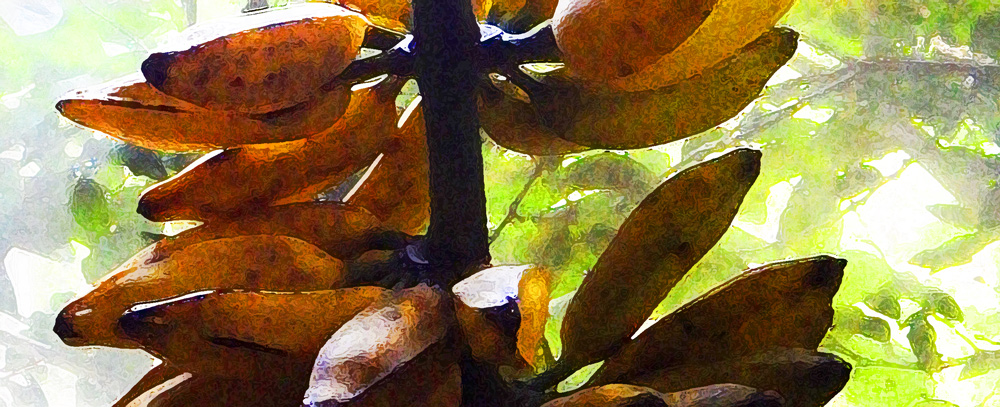The stalk of Orinoco bananas that fell the other day have ripened rapidly in my kitchen window.
We’ve been watching them turn yellow from green at a ridiculous pace. We literally saw bananas turn bright yellow between morning and evening.
I find that fresh fruit, roots and produce in the kitchen are better than any ornamentation.

Ever since I bought my first house, I’ve been hanging up baskets of edibles.
In the case of these Orinoco bananas, I pierced the stalk and strung them up with a hook onto the rack I use for my cast iron pans.
As they ripen (mostly from the top down), we’ve been eating them.
Though I find Orinoco bananas to be best for frying like plantains, my children like to eat them raw.
These are some of the fattest bananas we’ve grown yet. A few years of being fed by greywater and compost have given my banana trees a huge root mass.
I describe the best way to compost and raise bananas at the same time in my bestselling book Compost Everything: The Good Guide to Extreme Composting, which you can buy at Amazon for $2.99 in Kindle format, or get the awesome paperback version for $9.99.
(By the way, Grow or Die: The Good Guide to Survival Gardening is still on top in its category. Just wait until 2016… I’ve got more amazing things to share, Lord willing.)
Back to bananas. These Orinoco bananas are the same ones I featured in a video some while back. If you want to grow bananas where it occasionally freezes, this video is for you:
Something interesting on the big stalk we harvested: two of the bananas were joined together like Siamese twins.
Check this out:

Strange, eh? Reminds me of the “praying hands” banana, though not nearly as extreme.
It’s been a great fall and winter for bananas thus far. No freezes!
If I’m lucky, I’ll have another stalk of bananas to harvest in January.

